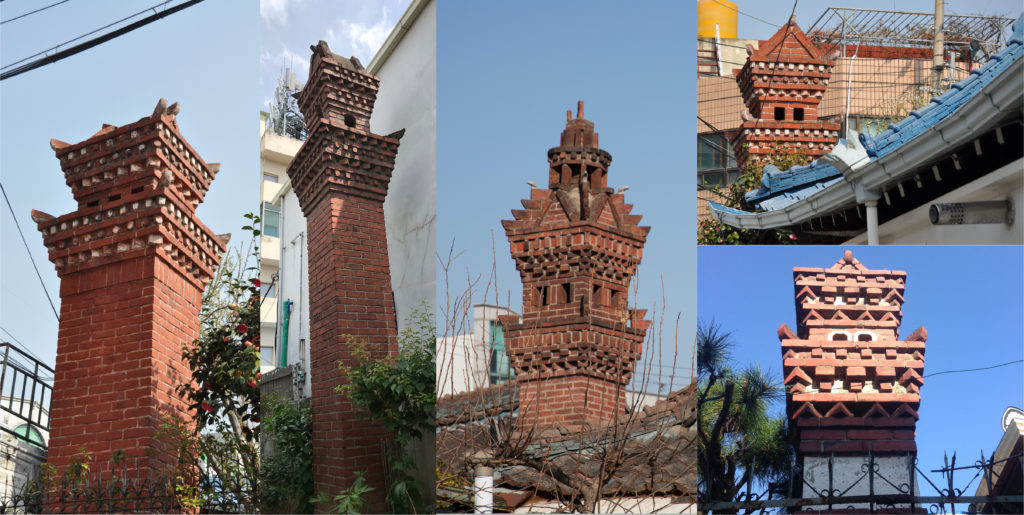Mass-Producing Hanok Housing: Chapter 1. The Background of the Hanok in Gwangju
“Une maison est une usine-à-habiter”*
By Kang Dong-su
When I first came to Gwangju, I lived in a hanok. It was nothing special back then. Every house in the neighborhood was a hanok: one story, tile roof, floor-heated with coal briquettes, and sporting an exterior chimney. But like much of Korea, that has changed. The hanok in the neighborhood are gone, replaced with modern multi-unit living spaces. Losing those magnificent structures completely and the memory of them would be a regrettable culture loss. One Gwangju resident, though, is exerting his efforts to see that this does not happen: Kang Dong-su restores hanok. He is also authoring this new column in the Gwangju News through which he plans to bring together his research, observations, and thoughts on hanok for the enjoyment of our readership. — Ed.
Even among residents of Gwangju, most don’t know the fact that this city had actually been one of the biggest hanok cities in Korea. It’s estimated that in the 1980s, there were more than 100,000 hanok in Gwangju. I guess that as soon as you read the word “hanok,” you probably imagined a traditional Korean house built in the Joseon Dynasty and located in an idyllic village setting. Surprisingly, they were mostly built in crowded mega-cities during a series of so-called “five-year economic development plans.” This massive economic project was divided into three periods, the first being 1967–1971, the second in 1972–1976, and the third 1977–1981. Gwangju’s many hanok of this era were mostly produced during the first two of these periods.
This concentrated, short-term housing-supply plan was inevitable, as the city planning done during the Japanese colonial period (1910–1945) couldn’t keep up with the city’s rapidly increasing population. (That plan expected the population of Gwangju to increase to 150,000 by 1967, while in fact it already exceeded 300,000 in 1960.)

After the independence of Korea, many people from the countryside came to Gwangju for many different reasons. Good education for the next generation, to be rich, to get a job in a factory – a lot of people came to the city emptyhanded but with a strong will and hope for the future. Also, Koreans who had been abroad in places like Manchuria or Japan came back to their homeland. Naturally, these migrations led to serious overpopulation in nearly every major city in Korea at that time.
From the 1950s, Gwangju started to build a lot of factories and “new towns” for economic growth and new residents. But as there were no deliberate master plans for increasing the housing supply, and as the city government had no funds to build every single house itself, said government prepared the land around the city center with rudimentary infrastructure and imprudently sold it all to private enterprises to build the “new town” houses. In turn, these private developers built mass-produced hanok (1950–1970), “citizens’ houses” (1950–1970, also called “culture houses,” which derived from the colonial period during the Japanese Empire), so-called “Western-style houses” (1970–1980, often called “French houses” or “Italian houses”), and early-stage Korean apartments (from 1960).
Until the 1970s, mass-produced hanok dominated the housing market, and we can still see those models in the old city center of Gwangju that were rapidly built by many different small real-estate developers targeting the working class. They had styles and floor plans that were similar to those of rich people who lived in the Jeolla provinces during the colonial period and were functionally modernized, using contemporary materials and equipment like cement Japanese rooftiles, glazed tiles, Western-style wallpaper, baked bricks, cement block bricks, factory-made glass, and briquette-oil heating systems.

One of the distinctive features of Gwangju’s mass-produced hanok is the briquette chimney. Each has a unique design derived from the Jeolla provinces’ colonial period and created by Chinese bricklayers who were hired by American missionaries, many of whom came to Korea fleeing the anti-Western Boxer Rebellion in China during the early 20th century. These brick chimneys were broadly used even after the Korean War and became one of the symbols of the Gwangju cityscape.
Through these iconic chimneys, we can better imagine the lives of Gwangju’s blue-collar workers during the period of the 1960s–1970s. While fathers and older siblings worked in their factories, workplace chimneys would billow out smoke. Meanwhile, mothers preparing dinner as all the red chimneys of the city’s mass-produced hanoks discharged smoke and the smells of cooked rice would call out to their children on the street to come in and eat dinner. Factory smokestacks and mass-produced hanok chimneys would not stop smoking until they had accomplished their final goal: the rapid economic development of Korea.
* “Une maison est une machine-à-habiter.” Le corbusier, the so-called “father of modern architecture,” said this famous sentence, declaring the end of ornamentalism and the birth of new humanism based on pragmatism. I replaced the French word machine (machine) with usine (factory) to amplify how this architectural modernism was brought to Gwangju in its own context (i.e., “A house is a factory for living in”).
The Author
Kang Dong-su is a traditional Korean carpenter born in Gwangju in the year 1996. He started learning and archiving historical architecture in Gwangju at the age of 17. He is currently the representative of his company, Baemui, which researches and renovates homes and historical architecture in Gwangju and the Jeolla provinces. Instagram @baemui.naru








